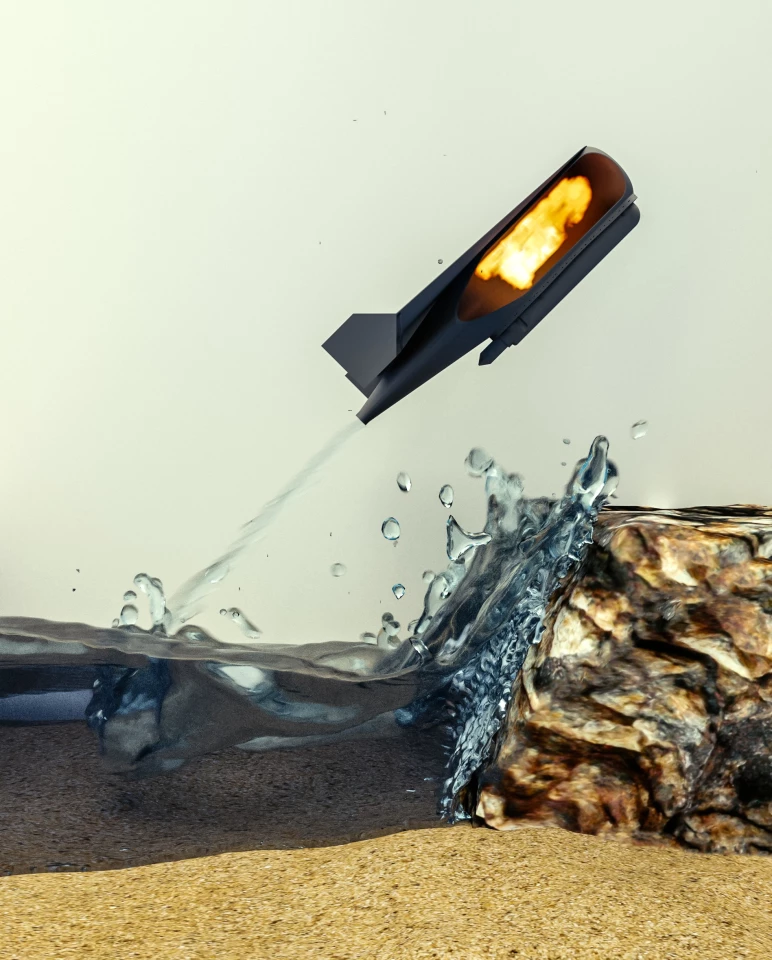Flying robots hold all kinds of promise when operating over dry land, but what could ones that use bodies of water as a base bring to the table? With an eye on water sampling and environmental monitoring, scientists at Imperial College London have developed a robot inspired by the flying fish, in that it can generate enough power to launch itself out of the water and glide through the air as a way of overcoming obstacles in its path.
The team at Imperial College London has been exploring the possibilities of bio-inspired water robots for some time now. Back in 2016 we took a look at its AquaMav robot, which moved like a gliding drone through the air but featured collapsible wings that allowed it to dive into the water like a seabird on the hunt for fish.
But instead of a mouthful of gills and fins, the robot is designed to collect water samples for analysis before using an internal carbon dioxide tank to generate a one-time thrust and launch into the air again. The onboard battery allowed the drone to fly for 14 minutes and cover around 5 km (3.1 mi), enough range for operators to stay a safe distance away.
A few years on, the researchers have changed their thinking a little, in designing a robot for repeated hops out of the water, albeit over much shorter distances of 26 m (85 ft).
“The previous aquaMAV robot operates on a very different principle of storing energy before the flight in the form of compressed gas which can only be released once,” lead researcher Dr Mirko Kovac explains to New Atlas. “The water reactive fuel jump-glider can repeatedly jump from the surface and the intent of the vehicle is not to fly long distance (we would have fitted it with a propeller) but rather to demonstrate the jump-gliding locomotion.”
The new robot weighs just 160 g (5.6 oz) and is packed with just 0.2 g (0.007 oz) of calcium carbide power. The robot pumps water from the environment into a reaction chamber to mix it with the powder and produce a burnable acetylene gas. This gas ignites, expands and expels the water as a jet stream, thrusting the robot out of the water and into the air.

According to the researchers, this novel method of propulsion using a pump as a single moving part and water reactive chemicals to create a full combustion cycle overcomes a big hurdle in small, water-friendly robotics. Launching from the water’s surface requires a lot of thrust, and with the ability to generate a force 25 times its own weight the team sees this robot’s capabilities as a big breakthrough.
The robot has been tested in a lab, in a lake and in a wave tank, and its creators say it demonstrated an ability to escape the water even when dealing with choppy conditions. This, matched with an ability to repeatedly launch out of the water, means the robot could be used to gather samples from different water bodies in a single sweep, following a disaster like a flood or nuclear incident, for example.
“The 26-meter jump capability allows it to overcome obstacles, move from a body of water to another one and sample in multiple points,” says Kovac.
Other possibilities include monitoring ocean water around coral reefs and keeping tabs on off-shore energy facilities. The team is now working on the materials that could allow for these kinds of sensing applications with hopes of conducting field trials further down the track.
“Significant work will be required to add relevant sensor packages onboard as well as an extension of the flight range to broaden application spectrum,” Kovac tells us. “However, we are currently pushing the aerial-aquatic monitoring domain with these robots and have already planned ocean field tests which will hopefully bring back environmental aquatic data relevant for climate change understanding.”
The research was published in the journal Science Robotics, while the video below shows the flying fish-inspired robot in action.
Source: Imperial College London








